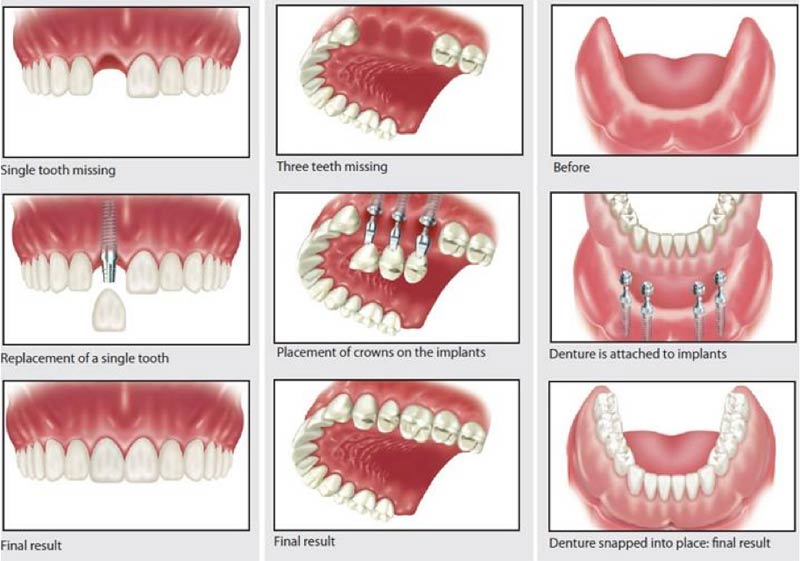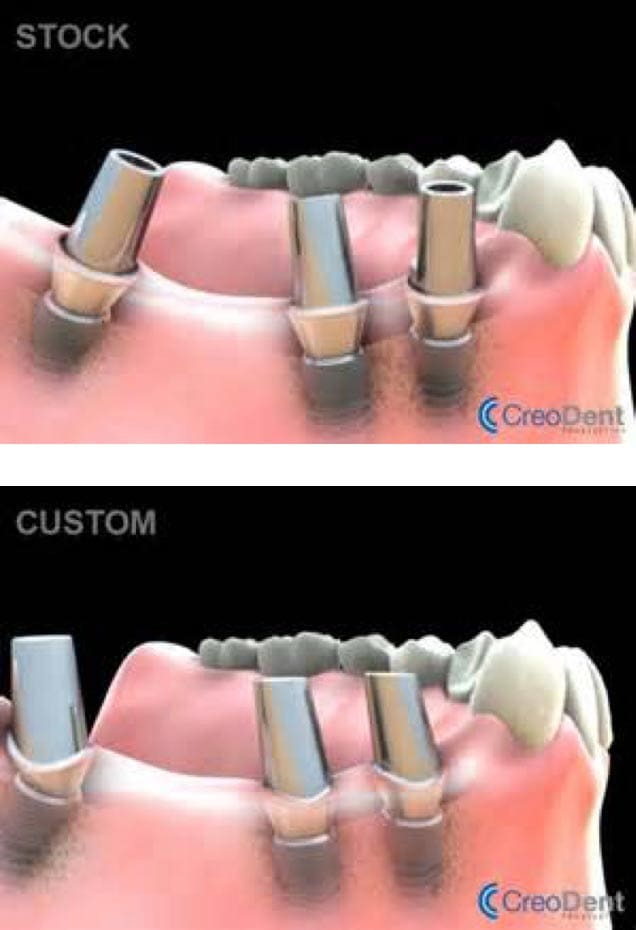Dental Implants
Home | Our Procedures | Dental Implants
Understanding Dental Implants?
Dental implants serve as titanium fixtures implanted into the jawbone. These fixtures, resembling screws with threads, establish a secure connection with the bone, allowing for intimate contact between the titanium surface and the jawbone. Over time, as the bone heals, it fuses directly to the implant, providing a stable foundation for the final crown—a porcelain and metal tooth-shaped restoration crafted by your dentist. The success of dental implants hinges on meticulous planning, precise placement, and careful restoration. Our collaborative approach ensures that your individual treatment plan achieves both aesthetic and functional goals.
Treatment Planning:
A comprehensive evaluation, including radiographs and a thorough examination of the bone and gum tissue, precedes implant placement. A cone beam CT scan may also be conducted to accurately assess and plan for the implant. If there’s insufficient bone or soft tissue, preparatory surgery may be necessary, such as bone grafting, sinus lift, or gum grafting. Virtual planning using computer software may be employed to ensure precise implant placement before surgery.
Surgery
Implant placement surgery is typically performed under IV sedation. After administering local anesthesia, a small incision is made in the gum tissue, and specialized drills create space for the implant. The implant is then inserted into the bone. Depending on the case, a healing abutment may be placed immediately (single-stage protocol) or the implant may be covered with gum tissue and left to heal undisturbed (two-stage protocol). Post-operative care involves antibiotics, pain medication, maintaining oral hygiene, and avoiding chewing near the implant site.
Healing and Uncovery
For successful integration, the implant must remain undisturbed during the initial healing phase, which typically lasts 3-4 months for the lower jaw and 4-6 months for the upper jaw. Temporary dentures may be provided for aesthetic purposes during this period. Once healed, the implant may undergo uncovery if a two-stage protocol was used. This involves a minor procedure under local anesthesia to expose the implant and place a healing abutment.
Final Restoration
Your dentist will fabricate the final crown after the implant has fully integrated with the bone. A final abutment is required to attach the crown to the implant. There are two types of abutments—prefabricated and custom—selected based on the restoration’s complexity and visibility. Your dentist or surgeon can deliver the abutment before crown fabrication.
In conclusion, dental implants offer high success rates and promise a positive experience throughout the process. We’re committed to guiding you through every step, ensuring optimal outcomes and your satisfaction.



